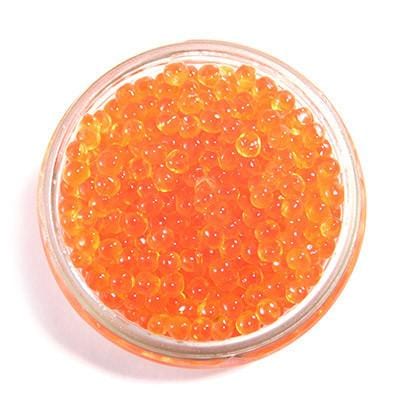Wild Caught Caviar - Learn About Wild Caviar

Though farmed caviar has become popular in recent years after over-fishing critically depleted some imported caviar varieties, some types of caviar are still harvested form the wild. Wild-caught caviar varieties continue to thrive due to an attractive combination of accessibility, fine flavor, and domestic availability. The harvesting of wild sturgeons (and other fish) is widely accepted for those breeds that are not currently facing environmental threats, a status which is defined by the International Union for Conservation of Nature. One such variety is the Shovelnose Sturgeon, which make their homes in the waters of many states, including Illinois and Kentucky— these and many other fish native to North America can still be responsibly wild-caught and harvested for their roe.
Khavyar’s wild-caught roe offerings range from Amia caviar, harvested from the bowfin fish that populate North America’s freshwater habitats in the Great Lakes and Gulf regions, to Spoonbill caviar, which originates in Alabama, Arkansas, and Tennessee. These fish, along with Golden Whitefish and the Shovelnose Sturgeon, can be harvested from the wild without disrupting or endangering future generations of the species. Because these fish are plentiful and have not been categorized as threatened or endangered, they are sourced directly from their natural habitats.
In some cases, the fishing and harvesting of roe from these species is a rich and time-honored part of the locality. Paddlefish roe, for instance, has long been a part of the fishing culture in Alabama, Arkansas, and Tennessee, with many local organizations spreading information about sustainable fishing practices and keeping a close eye on the waterways to ensure these populations are not overfished. Though this paddlefish caviar is harvested responsibly from the wild, it bears a striking resemblance to Caspian sturgeon caviar— a population who has been repeatedly depleted by overfishing—without the environmental toll.
Though the term wild-caught caviar once was synonymous with overfishing, the caviar industry has now entered a new age of environmental responsibility and sustainability. Through local, state and even international regulations that dictate what fish can be wild-caught and in what quantities, greater focus is put on the impact of caviar. Khavyar and its partners are committed to providing world-class caviar in an environmentally responsible manner. In conjunction with like-minded farms and fisheries, responsible harvesting of caviar from the wild ensures that this rare delicacy can be enjoyed both in the present, and for future generations to come.


Add a comment